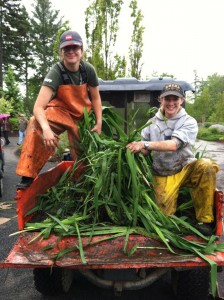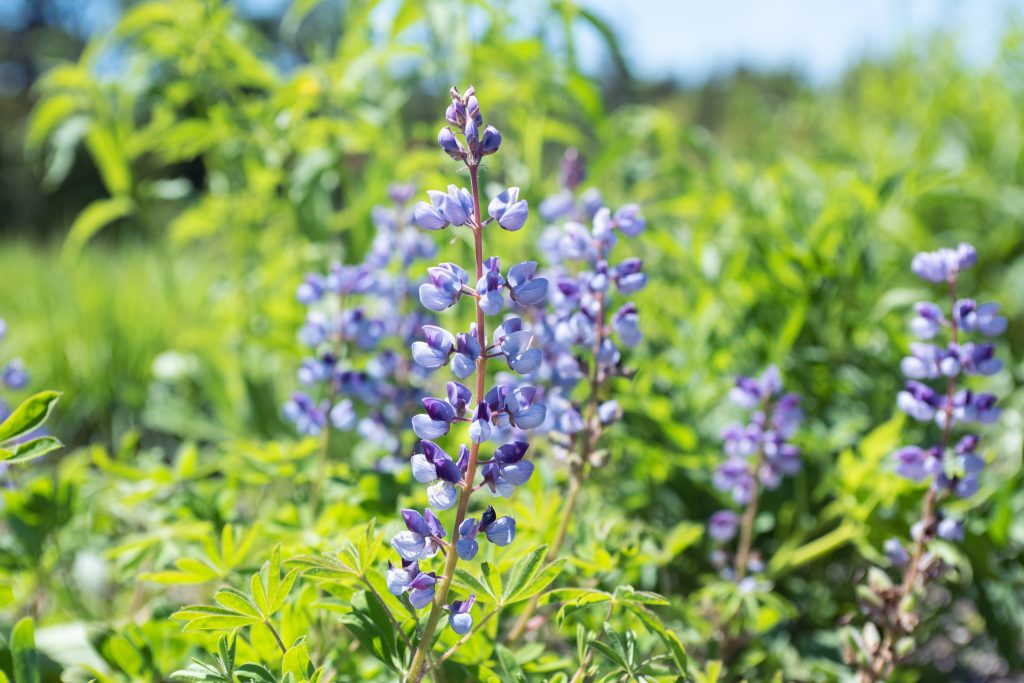|
|
 |
| Rhizomes |
 |
| Megan and I got absolutely filthy! But mission accomplished, the Iris is out! |
When I first started working at Coastal Maine Botanical Gardens, I decided early on that I would need a good pair of waterproof boots to work in. So I went out and purchased a pair of Muck boots, so far they have been wonderful, one of the best purchases ever. I never thought that I would curse the day I decided to wear these boots, but it did come.
Justin, one of the horticulturalists, asked the collective group who had waterproof shoes. Of course I had chosen to wear my waterproof boots and pants that day, so I spoke up and said I did. Megan, one of the gardeners, was the only other one with waterproof pants and boots, so we were chosen for Justin’s mission. The mission was as follows: Go to the Giles Rhododendron Garden and pull out the invasive Iris. Sounds simple, right? Wrong.
Here’s just a quick summary of the plant itself and the reasons we are evicting it from the pond. Iris pseudacorus, commonly known as yellow flag, is a fast-growing and fast-spreading invasive plant that can out-compete other wetland plants and form almost impenetrable thickets. Yellow flag spreads very quickly through both water-dispersed seeds and broken rhizomes. Rhizomes are a modified stem of a plant that is usually found underground and sends off roots from the nodes. Although the Iris is very attractive and can live in extremely wet conditions, its ability to spread its seeds so easily and quickly make it undesirable at the gardens.
The yellow flag iris does have some beneficial qualities, though. The plant is sometimes used as a form of water treatment due to its ability to take up heavy metals through the roots.
So, Megan and I went off towards the Rhody Garden thinking this task would be a breeze. All started off well. We brought our shovels down to the shore and did a little investigating to find that there were two bad clumps near us and then a couple of smaller ones on the other side of the pond. We started by attacking one of the largest clumps. Thinking it would be like taking any other plant out , we used our shovels to try and release it from the muddy foot of water it was living in. That didn’t work. We kept trying to move it and then dig some more because we thought the roots were still stuck, but it would not budge. Finally we realized that the plant was in fact not attached to the ground at all and was literally sitting on top of the mud.
We tried to pull it out and could only move it a couple inches at a time due to its unbelievable weight. Eventually we developed a system of counting to three and pulling with all our strength at the same time. We managed to get it up the hill and near the Kubota, one of the orange vehicles we use to get around and transport things. Getting this 70 lb clump of stinky, dripping, gross, muddy plant into the Kubota was the hardest part. We used every last bit of our strength to get it just to the edge. It was barely on there though and both of us had to get behind the plant and push the muddy bottom to get the plant all the way into the bed. Needless to say, that after two more experiences just like this one and pulling out what felt like several miles of rhizomes we were covered in swamp water and smelly mud. I can honestly say that I smelled like a swamp monster for two more days after this incident. Megan and I were exhausted, but very proud of our dead Iris.
– Kristin Neill, Horticulture Intern


